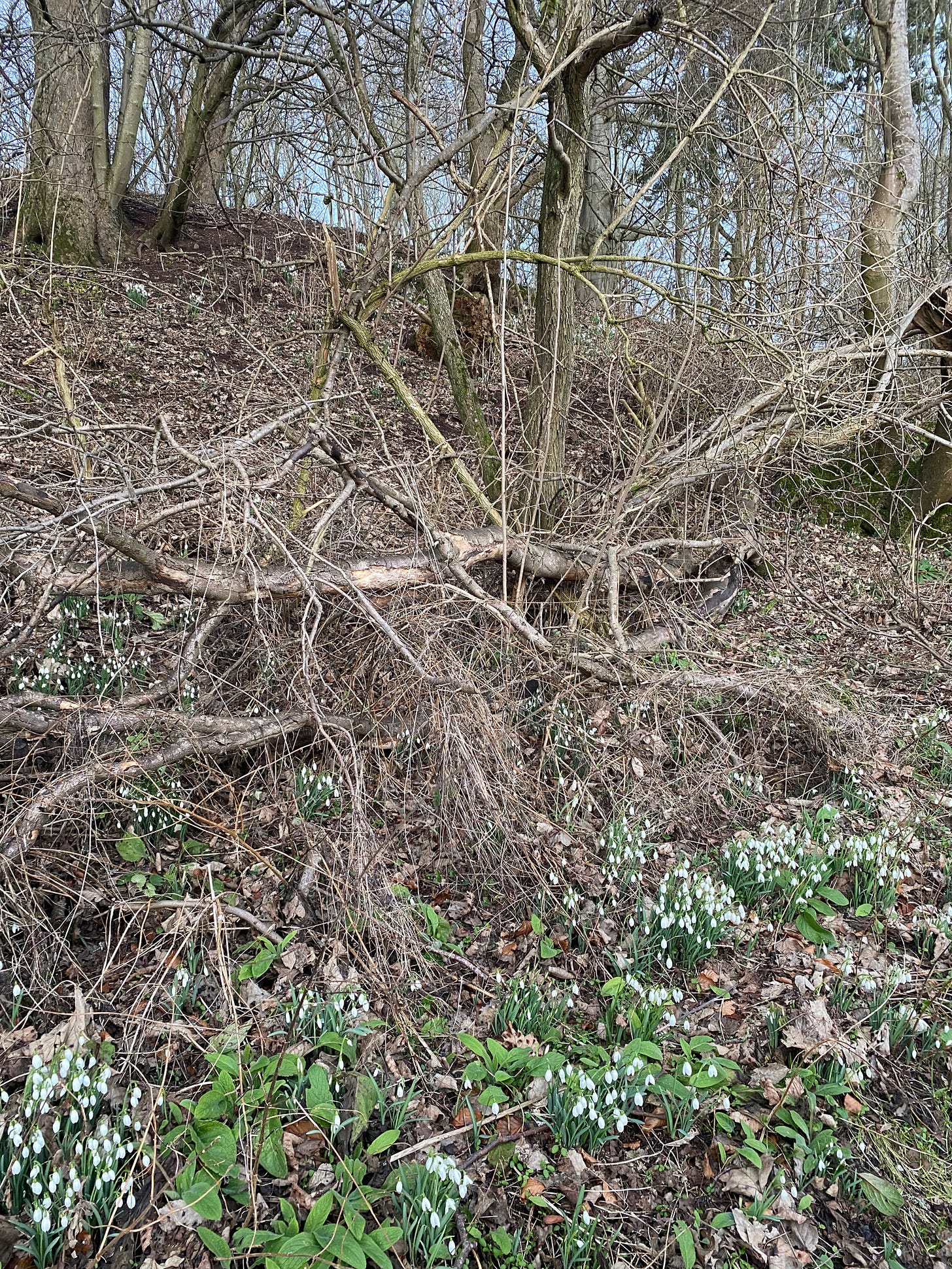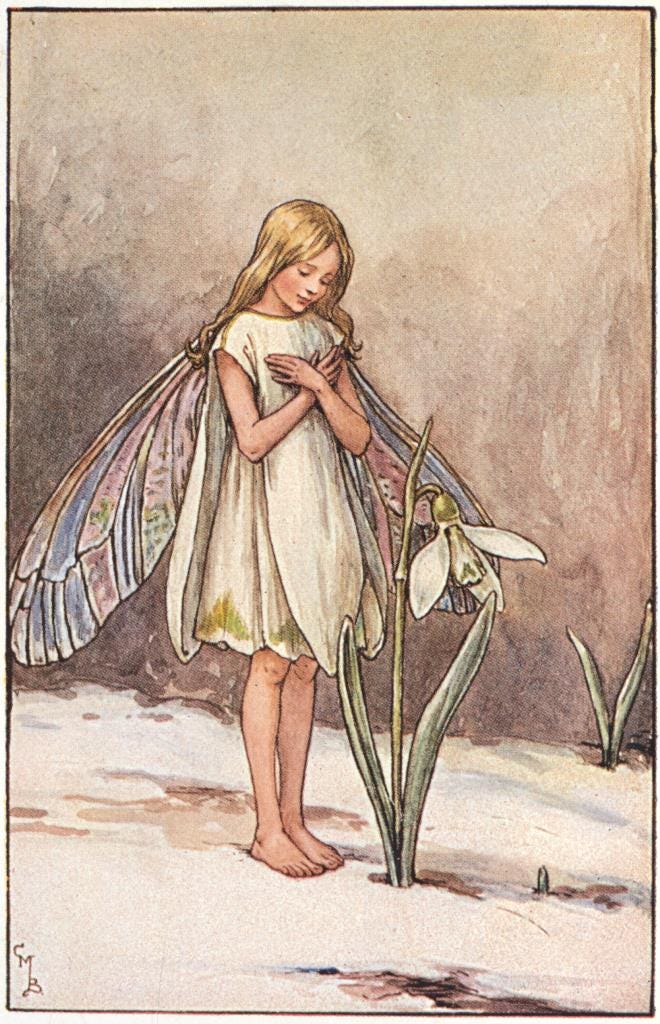The Feast of Candlemas, the blessing of the candles used through the year, is on February 2nd. It celebrates the increase in daylight hours. Blessing of candles is one of three popular blessings within the Catholic church: ashes and palms being the other two. The Feast of Lights (candles) celebrates Jesus as the Light of the World and with Candlemas comes Christmas closure. In the Works of the Poet, Robert Herrick Vol ii. Herrick writes:
UPON CANDLEMAS DAY
END now the white loaf and the pie,
And let all sports with Christmas die.
Traditionally Christmas decorations were taken down at Candlemas and as darkness fell, candles were placed on windowsills. At some point during the Middle Ages, the practice of blessing candles in church was held to have become idolatry. By the Reformation, the Church of England ceased to bless candles though it continues to light them.
Candlemas proverbs concerning geese lay emphasis that winter is only part way through. Half of the hay from the previous harvest remained to feed cattle until spring arrived. There is a saying Candlemas Candleless meaning that the days are lengthening, and that the need for candles grows less as the days get shorter. Candlemas marks the midpoint of winter between the solstice and spring equinox. A halfway feast and a comforting thought to those who find winter challenging.
Candlemas come and gone, The snow falls on hot stone. This couplet suggests that early spring snowflakes may still fall but that the snow won’t pitch for long.
The pre-Christian festival Imbolc has ancient Celtic roots and celebrates mid-winter. It is a stage in the Celtic Wheel, a wheel that is always turning. Imbolc recognises that life underground is stirring and heralds the start of the lambing season, the triumph of spring. It honours the Pagan Celtic Goddess, Brigid, a Christian Saint whose feast day is celebrated on February 1st.
Saints’ days are incorporated in rural tradition where there is a mixture of saint mythology and folklore. Brigid, the only Irish female saint, is a symbol of heroic female spirituality. Historically Brigid was a late fifth century nun (525 A.D.) who was given land in Kildare (Ireland), where she founded a church that became a prestigious monastic centre. Interestingly, the wearing of the veil (caille) gave female agency and divinity i.e. an ability to withdraw and view the world through Christ. The veiled Virgin or wimple (veil) wearer was known as the Cailleach (meaning revered as in a nun ). Cailleach has now become secularised to Old Hag. This may have been influenced by a general distrust of women, seeing Eve as responsible for Adam’s woes. Brigid was the patron saint of Healing, Smithwork (blacksmithing and forging) and Poetry. A matron of poetry was important because poets at that time were able to challenge unjust rule, in a society where oral (not manuscript) culture was the norm. Saint Brigid or Bride, a central figure in Irish hagiography, was a popular saint often referred to as the Mary of the Irish. Brigid is an eternal female in Irish folk tradition with at one time a cult following - Brigid is found in many Irish place names. The legend of Brigid’s cloak purports that she was only permitted to claim land for her monastery if it could be draped by her cloak. One throw of her cloak covered the town of Kildare and its surrounding countryside.Brigid’s cloak symbolises diversity, an ability to embrace many traditions. On St Brigid’s Day crosses are created from rushes or straw. At one time they were placed in the rafters to keep evil, fire and hunger at bay. According to legend, the cross was woven by the saint to convert a dying man. The cross made from rushes, represents the crucifix and the four arms of the St Brigid Cross remember the seasons. The cross has become an emblem for St Brigid. There are many legends surrounding St Brigid (or Saint Bride). The Hebrides is said to be named after her – Bride of the Isles and in South Uist, folklore suggests that she arrived on the Island with an oystercatcher (gille -Brihde) on each wrist.
In 1501 Wybkyn de Worde set up a printing press in the graveyard of the landmark St Bride’s Church, Fleet Street – this church is known as the Journalists’ church. In common with many who celebrated the fifteenth hundred year since the death of Saint Brigid (Bride), the Fleet Street church held a lunchtime event reflecting on the life of St Bride. The congregation upheld a one-minute pause for peace.
February 5th 2024 brings the first St Brigid’s public holiday in Ireland. Going forward on the first Monday in February there will be a holiday for St Brigid. The Bank holiday (the word holiday comes from the Holy Day Feast ) brings an opportunity to celebrate spring, community and creativity. St Brigid was a female saint who cared for the countryside but who also welded power as a woman.
Candlemas (February 2nd) is forty days after Christmas, the birth of Christ. It commemorates a joint celebration of the purification of Mary and presentation of Jesus in the Temple. The purification of Mary alludes to the Jewish practice of women who had given birth being required to go into seclusion for forty days. Interestingly, the bible cites the number forty on various occasions. Scholars believe it is a duration of trial and hardship or probation (The season of Lent not including Sundays, is forty days. Noah’s flood lasted forty days.). Whilst in the Temple, Jesus and Mary met the prophet Simeon and an elderly prophetess, Anna. Simeon had been told that he would not die until he saw God’s son. For the Christian this may be described as intelligent waiting. The character of Simeon is layered in wisdom and hope woven with patience, as we read (or sing) in the Song of Simeon or Nunc dimittis.
Lord, now lettest thou thy servant depart in peace: according to thy word. For mine eyes have seen thy salvation. Which thou hast prepared before the face of all people. To be a light to lighten the Gentiles and to be the glory of thy people Israel. Luke 2.29-32
Mary’s Tapers, Fair Maids of February or Candlemas Bells are alternative names for Snowdrops Galanthus nivalis which are associated with Mary. The flower represents purity and hope.
The snowdrop in pure white array
First rears her head on Candlemas day.
In common with the Prophet Simeon, these flowers are patient. They peep up through snow and frozen ground as the winter days lengthen. The snowdrop is a resilient, tiny flower and brings hope as we look forward to spring
.
The Snowdrop Fairy
By Cecily Mary Barker
Deep sleeps the Winter,
Cold, wet, and grey;
Surely all the world is dead;
Spring is far away.
Wait! the world shall waken;
It is not dead, for lo,
The Fair Maids of February
Stand in the snow!
In France crepes are eaten at Candlemas which is known as La Chandeleur or Le Jour des Crêpes (Crêpes Day). The round shape and golden colour of a crêpe or pancake symbolises the sun and a return to longer days. Fillings can be simple (vanilla sugar), sweet or savoury.Wild Sorrel and Sea Kale are in season in early February; these flavours combine well together in savoury pancakes.






